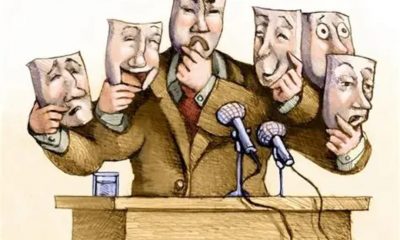society
Ogun Suspends Commissioner over Alleged Sexual Harassment


society
LEKKI TOLL GATE RENAMED: 103 LIVES TOLL GATE LEKKI

LEKKI TOLL GATE RENAMED: 103 LIVES TOLL GATE LEKKI
On October 20, 2020, the world witnessed the horror of the Lekki Toll Gate Massacre, where Nigerian youths raising their voices for justice were met with bullets instead of dialogue. 103 of those brave souls, now confirmed as victims, were gruesomely murdered and unceremoniously buried. Their blood still cries for justice.
In their honour, and in memory of the Nigerian flag that bled to death that night, the Believe and Build Nigeria Movement (BBNM) hereby announces the renaming of Lekki Toll Gate to “103 Lives Toll Gate, Lekki (103 LTG Lekki).”
This symbolic act is a call to conscience for Nigerians and the world: Humanity must never be silent again.
The official branding will be unveiled on September 20, 2025, and will fly across social media and global solidarity platforms from that date until October 20, 2025, and beyond.
We invite the world to mourn with us and join the call for remembrance and justice:
#103LivesTollGateLekki
Signed,
Dr. Bolaji O. Akinyemi, 20th, August 2025.
For Believe and Build Nigeria Movement (BBNM)
society
Civil Society in Edo Clears Air on Auchi Crash, Says Dangote Cement Truck Was Not at Fault

Civil Society in Edo Clears Air on Auchi Crash, Says Dangote Cement Truck Was Not at Fault
The Coalition of Edo Civil Society Organisations (CECSO) has absolved Dangote Cement of blame in the recent tragic accident along the Auchi-Okpella-Okene road, near the Omega Fire Ministry in Auchi, Etsako West LGA of Edo State, insisting that contrary to online reports, the company’s truck was not responsible for the fatal crash.
In a detailed investigative report released on Tuesday and signed by its president, Comrade James Osahon, the coalition said its independent findings aligned with police confirmation that it was a third-party cement truck, not the Dangote Cement CNG truck, that triggered the chain of events leading to the accident.
CECSO described as “malicious and mischievous” the attempt by certain groups and online platforms to hastily blame Dangote for the tragedy, stressing that such misinformation not only disrespects the dead but also undermines efforts at holding the real culprits accountable.
“After a careful on-the-ground investigation, which included visits to the accident scene and consultations with security personnel, we can authoritatively confirm that the accident was not caused by the Dangote Cement CNG truck. The evidence overwhelmingly shows that a third-party truck, loaded with cement, lost control on a slope due to suspected brake failure and rammed into other vehicles before colliding with the Dangote truck,” Osahon said.
He explained that the Dangote truck became an unfortunate victim of circumstance when it was struck on the side after the errant truck lost control, which eventually caused the Dangote vehicle to catch fire.
The coalition further reinforced its position with the official statement of the Edo State Police Command. The Police Public Relations Officer, CSP Moses Yamu, had earlier confirmed that three vehicles were involved in the accident — two trucks and a Mercedes-Benz GLK.
According to him, all three occupants of the GLK were evacuated to the hospital, where they were confirmed dead, while the Dangote truck that caught fire was later brought under control.
CECSO noted that this clear police confirmation invalidates the false narratives being pushed online, accusing some groups of deliberately seeking to “drag the name of Dangote through the mud.”
“This smear campaign is nothing but a hatchet job. We are aware that some shadowy interests are uncomfortable with the growing strides of Dangote Cement, particularly in the area of safer, cleaner CNG trucks now deployed on Nigerian roads. These individuals seize every tragedy as an opportunity to malign the company. But truth is sacred, and no amount of propaganda will change the facts,” Osahon declared.
The coalition stressed that civil society in Edo will not sit idly by while falsehood is weaponised against businesses and communities, warning that spreading misinformation in moments of tragedy only fuels public anger and diverts attention from systemic road safety lapses that truly require urgent solutions.
“We must not allow reckless narratives to overshadow the core issues of road safety, vehicle maintenance, and stronger regulation of third-party transport operators. What happened in Auchi is tragic, but blaming the wrong party will not bring back the lives lost or prevent future accidents,” CECSO declared.
The group also commiserated with families of the deceased and urged government agencies to fast-track road safety reforms, including stricter enforcement of haulage vehicle standards to reduce accidents caused by brake failure and poor vehicle maintenance.
Reaffirming its commitment to transparency and accountability, CECSO said it would continue to monitor the case to ensure that the victims receive justice and that accurate information reaches the public.
“We stand with the truth, and the truth is simple: Dangote Cement did not cause this accident. Any report suggesting otherwise is false, misleading, and driven by ulterior motives. We urge Nigerians to ignore such fake news and focus on demanding stronger road safety reforms. Our coalition remains committed to speaking truth to power and defending the integrity of our communities,” Osahon concluded.
society
They Stripped Her Dignity, Not Just Her Clothes”: Nigeria Must Never Normalise the Vigilante Brutalisation of NYSC Members in Anambra State

They Stripped Her Dignity, Not Just Her Clothes”: Nigeria Must Never Normalise the Vigilante Brutalisation of NYSC Members in Anambra State.
By George Omagbemi Sylvester | Published by saharaweeklyng.com
On August 19–20, 2025, Nigerians woke up to a horror no society should tolerate: ARMED MEN BELIEVED to be OPERATIVES of a LOCAL VIGILANTE OUTFIT in ANAMBRA STATE stormed a corpers’ lodge in Oba, Idemili South LGA, beat National Youth Service Corps (NYSC) members and stripped a young woman naked while she cried for help. The viral footage (too degrading to describe in full) ignited national outrage and a flurry of official statements. The Anambra State Government condemned the attack; arrests were announced; NYSC leadership decried the assault; and, in a further twist, the police claimed their investigation had been stalled because the principal victim had not yet appeared to give a statement. None of this changes the fundamental truth: what happened in Oba was not “OVERZEALOUSNESS.” It was a crime against the person and a desecration of the Republic’s promise to its youth.
Let us be exact about the facts, because accuracy is the first refuge of justice. Multiple reputable outlets reported that the assault occurred in Oba, Idemili South. The victim has been identified in press reports as Edema Jennifer Elohor; some reports also reference her NYSC details. The Anambra State Government publicly condemned the attack; the Governor’s wife, Dr. Nonye Soludo, called it “UNACCEPTABLE, DISTURBING and DEHUMANIZING” the state disclosed that the implicated vigilante operatives had been identified and arrested. The NYSC, for its part, issued a statement condemning the abuse and insisting that justice be done. Meanwhile, the Anambra State Police Command stated on August 19 that its probe was hampered because the victim had not yet appeared; an assertion that, while procedurally relevant, is morally secondary to the primary offence captured on video.
Strip away the bureaucratic phrasing and the politics and you are left with an assault on the basic covenant between state and citizen. As the political theorist Max Weber reminded us, the modern state claims a monopoly over the legitimate use of force. That monopoly is not a blank cheque; it is confined by law, due process and the inherent dignity of the human person. Whatever name the Anambra outfit goes by (AGUNECHEMBA VIGILANTE GROUP or “SECURITY NETWORK”) its personnel do not stand above the Constitution. They are bound by it. As Chinua Achebe warned, “The trouble with Nigeria is simply and squarely a failure of leadership.” Leadership that tolerates humiliation as a tool of “SECURITY” corrodes public trust and invites anarchy.
No one should romanticise vigilante structures. Community security outfits can deter petty crime and supplement overstretched police units; but without strict training, supervision and accountability, they easily mutate into instruments of fear. Hannah Arendt wrote that “the rule of law; means that the law rules,” not men with cudgels deciding who is an “INTERNET FRAUDSTER” based on whim. On the video evidence and the admissions reported so far, there was no lawful arrest protocol, no presumption of innocence and certainly no respect for bodily integrity. It is barbarism disguised as order.
The NYSC scheme embodies a national promise: THAT OUR GRADUATES WILL SERVE and in RETURN the NATION will GUARD THEM. When that promise is broken, we do not merely injure an individual; we vandalise a national institution. Wole Soyinka’s admonition rings painfully true here: “The man dies in all who keep silent in the face of tyranny.” Silence after Oba would be complicity. If we allow VIGILANTE HUMILIATION to pass as “ROUTINE CHECKS,” we invite a bleak future where uniforms (any uniforms) become licences to degrade.
Accountability must therefore be immediate, transparent and exemplary. First, the Anambra State Government should publish, within days, the names, ranks and chain of command of all personnel implicated in the Oba assault, together with the statutory basis under which their outfit operates. Second, prosecutors should file charges that reflect the gravity of the CONDUCT ASSAULT OCCASIONING HARM, CONSPIRACY, CRIMINAL INTIMIDATION and any SEXUAL OFFENCES implicated by the public stripping; rather than the limp euphemism of “UNPROFESSIONAL CONDUCT.” Third, oversight cannot stop at the foot soldiers. Who armed, accredited and deployed these men? What rules of engagement were they trained to follow? What disciplinary records exist? These answers belong in open court and in a public white paper.
To the Nigeria Police Force: the public will accept procedural updates, but not procedural excuses. Yes, complainant testimony strengthens a case. But Nigeria prosecutes murder without the victim’s testimony; it can prosecute a filmed assault too. The video evidence, corroborating eyewitness accounts and the suspects’ own admissions can sustain a prosecution. The state cannot outsource justice to a traumatised young woman’s availability. Build the case; protect the victim; proceed. As Nelson Mandela taught, “To deny people their human rights is to challenge their very humanity.” The duty to vindicate those rights rests with public institutions not with the wounded alone.
To the NYSC hierarchy: do more than condemn. Demand binding MOUs with state governments detailing protection protocols for corps members 24/7 emergency hotlines that route directly to a state-level joint operations room; mandatory body-worn cameras for any non-police outfit that interacts with corps lodges; and rapid suspension-and-reporting clauses that trigger when any outfit detains an NYSC member. Publish a quarterly safety dashboard: incidents, responses, outcomes. Sunlight disciplines power.
To Governor Chukwuma Soludo: your government’s condemnation is right and the reported arrests are necessary; but this is an inflection point. Order an immediate audit of all quasi-security structures in Anambra; mandates, training curricula, oversight and complaint mechanisms. Suspend field operations of any outfit that cannot demonstrate compliance with human-rights standards. Constitute an independent panel (including the NBA, civil society, women’s groups and a retired judge) to report within 30 days on gaps and reforms. Anything less would be administrative theatre.
To the National Assembly: legislate, do not lament. Nigeria needs a uniform federal framework for community and vigilante outfits: licensing, training standards, clear subordination to the police command, use-of-force policies aligned with human-rights law, compulsory insurance, body cameras and criminal liability for supervisors who tolerate abuse. Create a federal registry; unregistered groups must be disbanded. Without this, the “MONOPOLY of LEGITIMATE FORCE” becomes a caricature, scattered among mobs with muskets.
To the public: OUTRAGE is not ENOUGH. Demand the specific. Ask Anambra’s Attorney-General for the charge sheet. Ask the Police Commissioner for the case number and the lead investigator’s name. Ask NYSC what new protection protocols will be in place by the next orientation camp. Democracy is not a spectator sport; it is a contact sport for citizens of conscience.
Above all, we must centre the victim’s dignity and safety. TRAUMA-INFORMED care is not charity; it is justice. Anambra should guarantee medical and psychosocial support, personal security and legal assistance; immediately and at state expense. If the victim chooses privacy, respect it. If she chooses to testify, protect her. Justice that RE-VICTIMISES is no justice at all.
Let us end where we must: with first principles. A nation that cannot keep its young safe while they serve is not serious about its future. The Oba assault was a line-crossing event; an alarm bell. We either rebuild the guardrails now or we normalise public cruelty. Achebe cautioned that “one of the truest tests of integrity is its blunt refusal to be compromised.” Nigeria’s integrity is on trial in Anambra. We must refuse compromise.
ACTION POINTS WE EXPECT TO SEE WITHIN 30 DAYS:
Charge and arraign all implicated operatives; publish the case status weekly.
Suspend and retrain the vigilante outfit; enforce a rights-compliant code of conduct with body cameras and documented stop-and-search protocols.
Victim-centred relief: medical care, counselling, legal support and protection.
NYSC–State MOU on corps members’ safety with joint hotlines and rapid response teams.
Independent review panel with a public report on community-security reform.
If these steps are taken (visibly, verifiable) Anambra can turn a shameful episode into a constitutional reset. If not, the message to every corps member is chilling: YOUR KHAKI OFFERS NO SHIELD. That must never be our message.
Sources consulted for factual verification include national dailies and official statements reporting the location (Oba, Idemili South), the NYSC’s condemnation, the state’s reaction and arrests and the police’s update on the investigation. See: Punch’s breaking coverage of the outrage; Vanguard’s report quoting Dr. Nonye Soludo and noting arrests; NYSC’s public condemnation and victim identification in contemporaneous reporting; and Sahara Reporters’ detailed account of the police statement and the vigilante group involved.
“Justice is what love looks like in public.” ~ Cornel West. Today, love demands we defend our children in khaki; without fear, without favour and without delay.
-

 society5 months ago
society5 months agoRamadan Relief: Matawalle Distributes Over ₦1 Billion to Support 2.5 Million Zamfara Residents
-

 Politics2 months ago
Politics2 months agoNigeria Is Not His Estate: Wike’s 2,000‑Hectare Scandal Must Shake Us Awake
-

 society4 months ago
society4 months agoBroken Promises and Broken Backs: The ₦70,000 Minimum Wage Law and the Betrayal of Nigerian Workers
-

 society3 months ago
society3 months agoOGUN INVESTS OVER ₦2.25 BILLION TO BOOST AQUACULTURE











